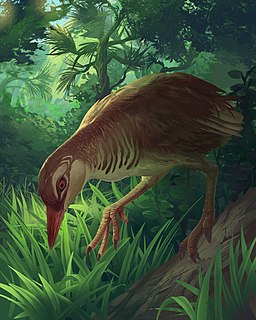
Tubuaʻi or Tupuaʻi is the main island of the Austral Island group, located 640 km (400 mi) south of Tahiti. In addition to Tubuai, the group of islands include Rimatara, Rurutu, Raivavae, Rapa and the uninhabited Îles Maria. They are part of the Austral Islands in the far southwest of French Polynesia in the south Pacific Ocean. Tubuai island sustains a population of 2,217 people on 45 km2 of land. Due to its southerly position, Tubuai has notably cooler weather than Tahiti.

The Austral Islands are the southernmost group of islands in French Polynesia, an overseas country of the French Republic in the South Pacific. Geographically, they consist of two separate archipelagos, namely in the northwest the Tupua'i islands consisting of the Îles Maria, Rimatara, Rūrutu, Tupua'i Island proper and Ra'ivāvae, and in the southeast the Bass Islands composed of the main island of Rapa Iti and the small Marotiri. Inhabitants of the islands are known for their pandanus fiber weaving skills. The islands of Maria and Marotiri are not suitable for sustained habitation. Several of the islands have uninhabited islets or rocks off their coastlines. Austral Islands' population is 6,965 on almost 150 km2 (58 sq mi). The capital of the Austral Islands administrative subdivision is Tupua'i.
The Austral Islands are part of the territory of French Polynesia. The music of the islands is similar to the music of other Polynesian islands. The largest of the Austral Islands is Tubuai, which is known for its ancient, atonal singing style, said to be the purest representation of pre-contact Polynesian music in French Polynesia.

Gallirallus is a genus of rails that live in the Australasian-Pacific region. The genus is characterised by an ability to colonise relatively small and isolated islands and thereafter to evolve flightless forms, many of which became extinct following Polynesian settlement.
Austral is an endangered Polynesian language that is spoken by approximately 8,000 people (1987). It is spoken only on the Austral Islands and the Society Islands of French Polynesia. The language is also referred to as Tubuai-Rurutu, Tubuai, Rurutu-Tupuai, or Tupuai. In structure, it is similarly compared to Tahitian.

Îles Maria or simply Maria, also known as Hull Island, is a small coral atoll in the Pacific Ocean. Its original name is Nororotu. The nearest island is Rimatara situated 205 kilometres to the ESE.
Glochidion raivavense, also known by its synonym Phyllanthus raivavense or by the local name mahame on the island of Tubuai, is a species of plant in the family Phyllanthaceae. It is endemic to the Austral Islands in French Polynesia, where it is native to the islands of Rurutu, Tubuai, and Raivavae.
The Huahine rail was a species of bird in the family Rallidae. It was a medium-sized Gallirallus rail endemic to Huahine in the Society Islands of French Polynesia. It is known only from subfossil remains found at the Fa'ahia archaeological site on the island. Fa'ahia is an early Polynesian occupation site with radiocarbon dates ranging from 700 CE to 1200 CE. The rail is only one of a suite of birds found at the site which became extinct either locally or globally following human occupation of the island.
Robert Bollt was an American archaeologist, specializing in Pacific Archaeology.
The Tahuata rail is an extinct species of flightless bird in the Rallidae, or rail family.
The Ua Huka rail is an extinct species of flightless bird in the Rallidae, or rail family.
The Nuku Hiva rail is an extinct species of flightless bird in the Rallidae, or rail family.
The Niue rail is an extinct species of flightless bird in the Rallidae, or rail family.
The Mangaia rail is an extinct species of flightless bird in the rail family, Rallidae.

The ʻEua rail is an extinct species of flightless bird in the Rallidae, or rail family. It was described in 2005 from subfossil bones found on the island of ʻEua, in the Kingdom of Tonga of West Polynesia.

The Tongatapu rail was a species of bird in the family Rallidae. It was apparently native to the island of Tongatapu in the Kingdom of Tonga, in Polynesia in the south-west Pacific Ocean. It is known only from brief descriptions of a specimen, now lost, collected from Tongatapu in 1777 in the course of James Cook's third voyage to the Pacific, and from a contemporary illustration by Georg Forster.

The Flag of the Austral Islands is the flag of the Austral Islands of French Polynesia in the Pacific Ocean administered by France.

The Tubuai tropical moist forests is a tropical and subtropical moist broadleaf forests ecoregion in French Polynesia. It covers the Austral Islands.

Astolfo's rail is an extinct species of flightless bird in the Rallidae, or rail family. It lived in Rapa Iti, one of the Bass Islands in French Polynesia.







